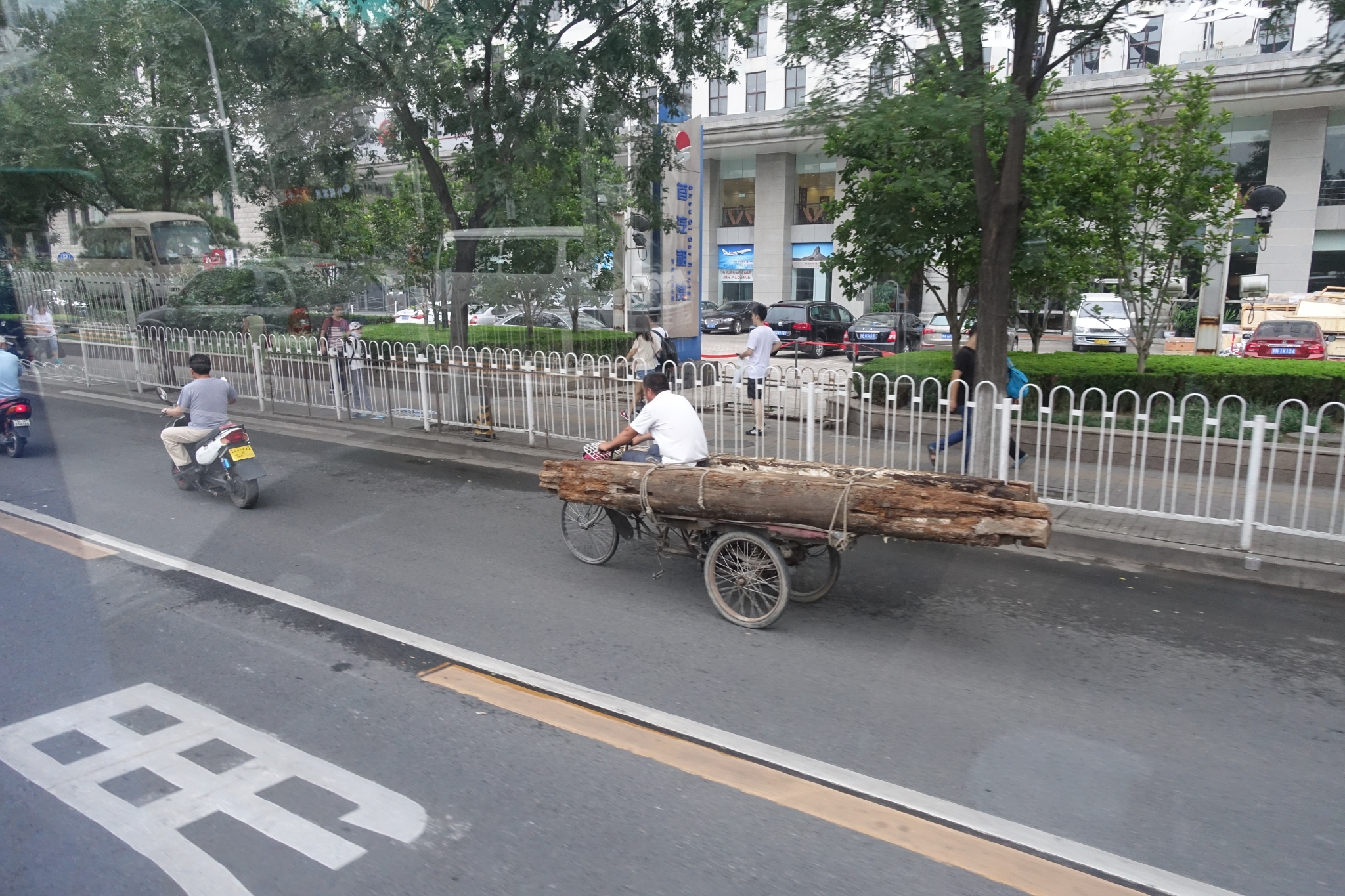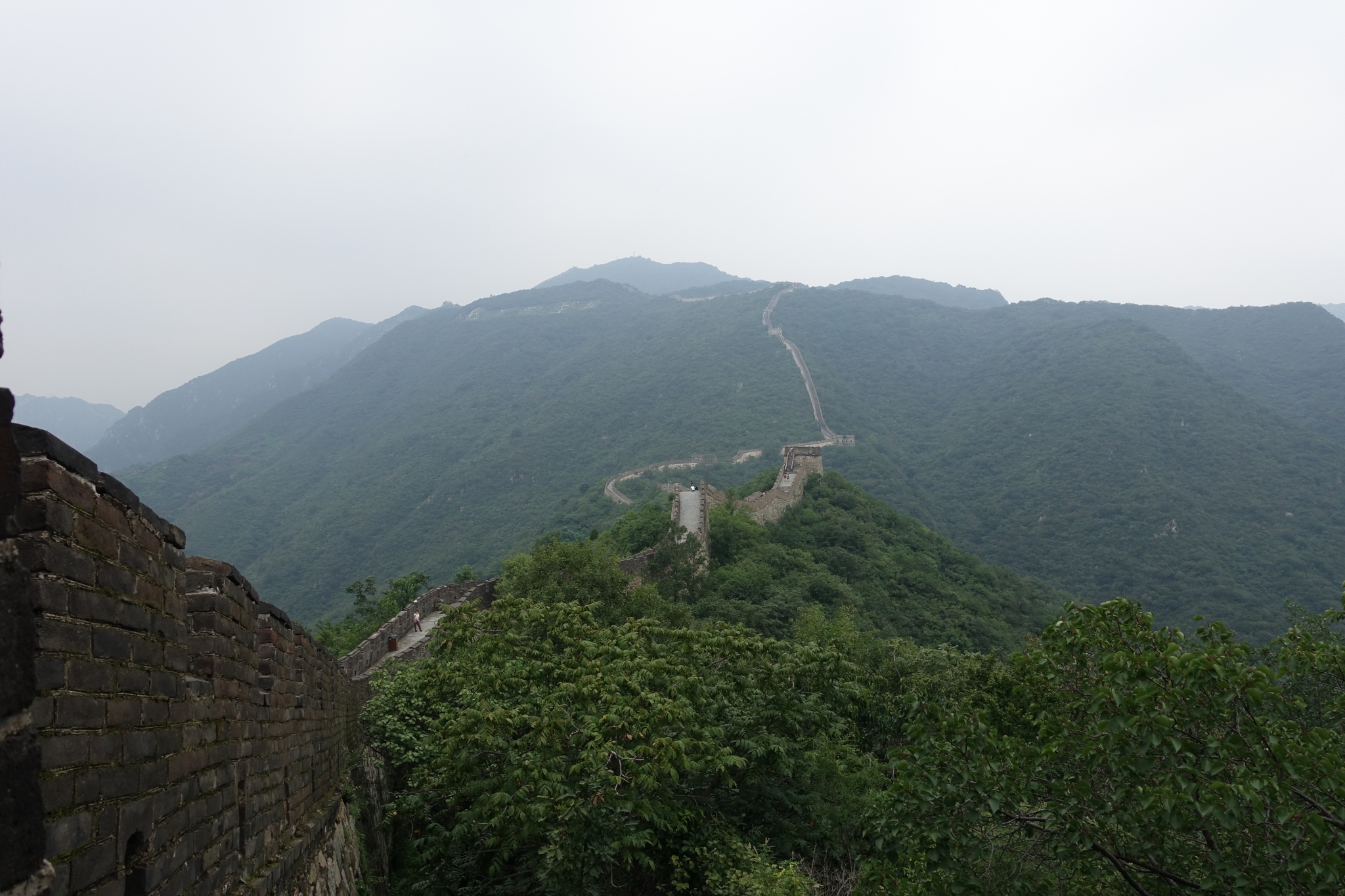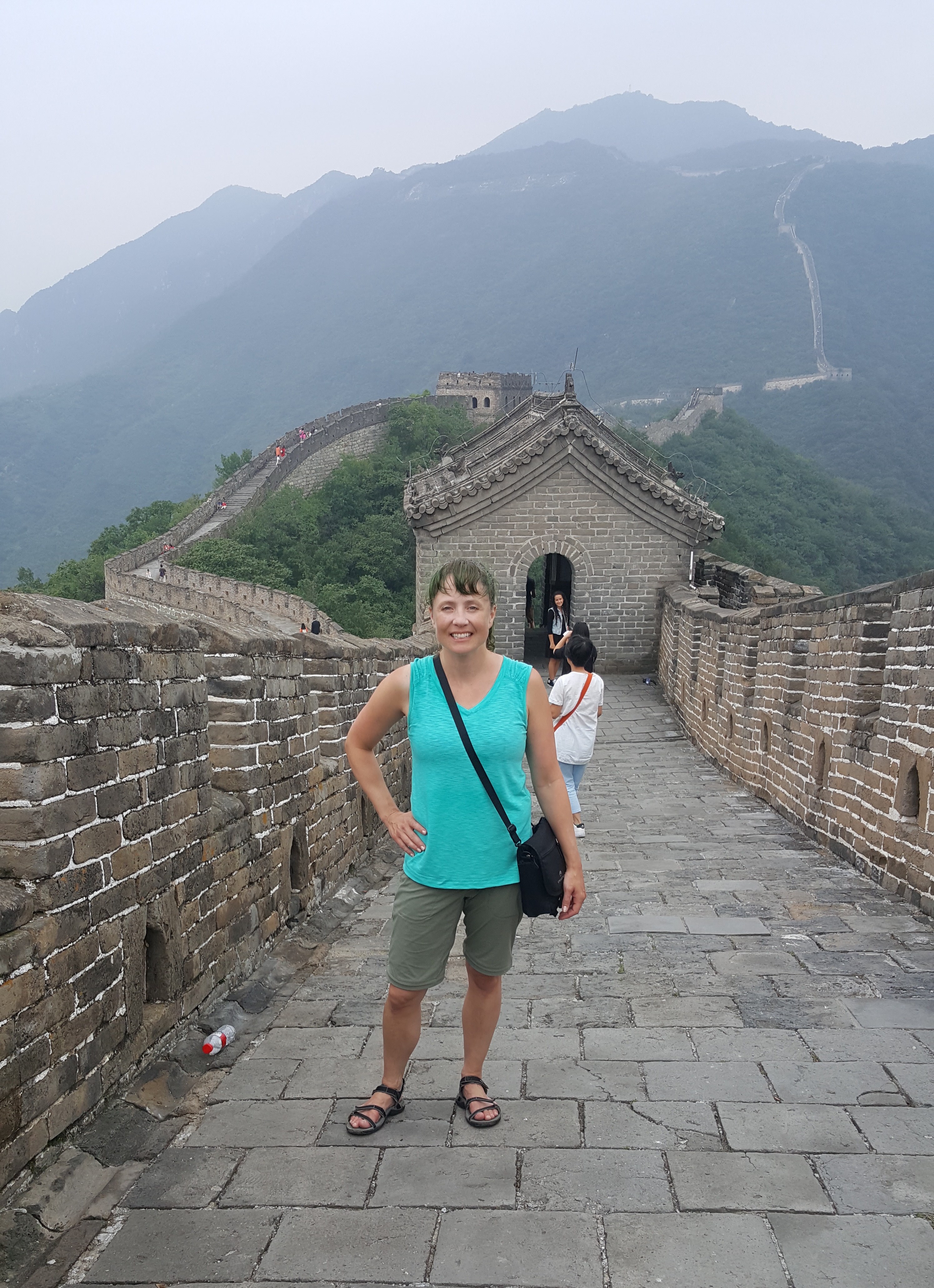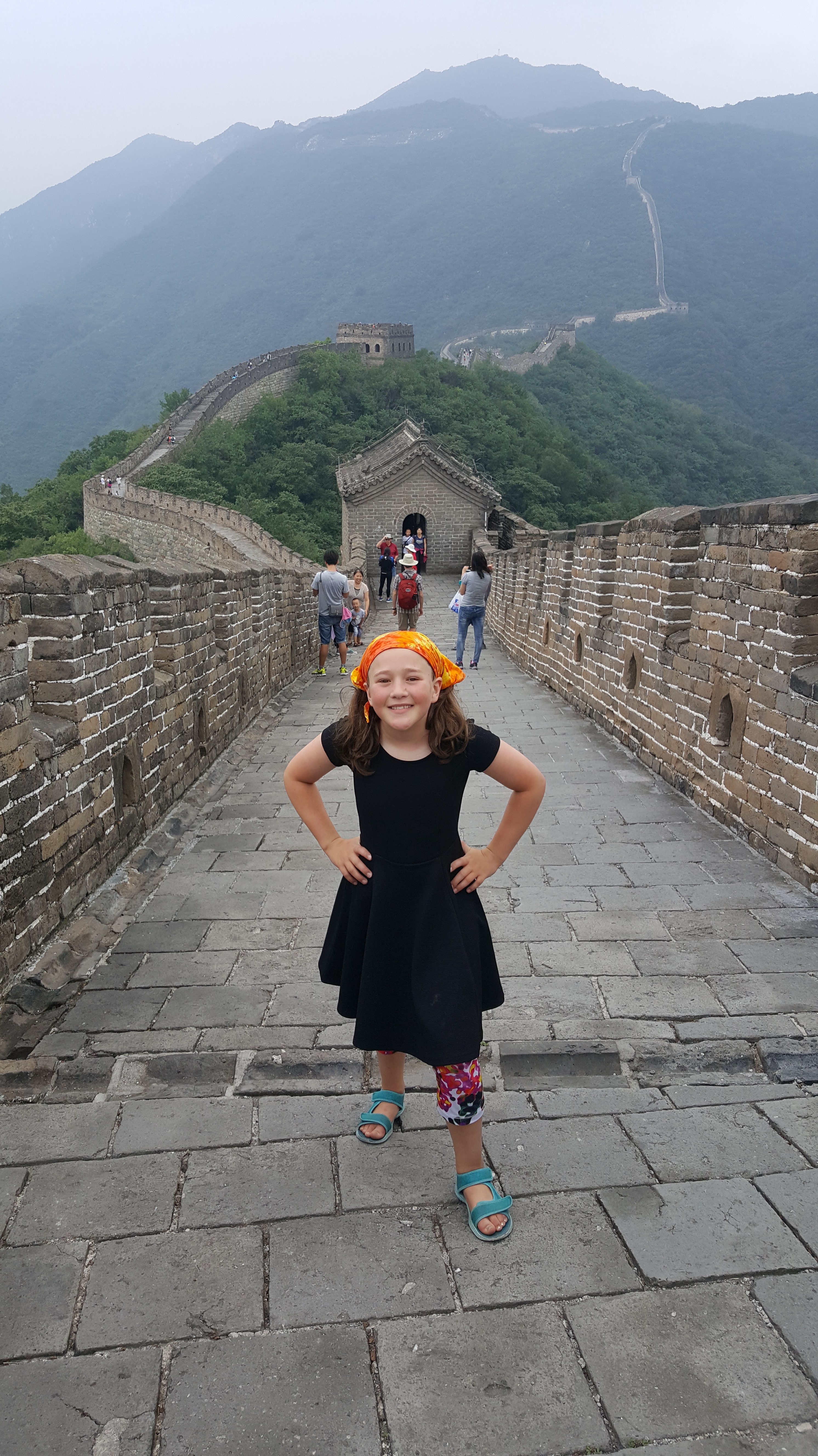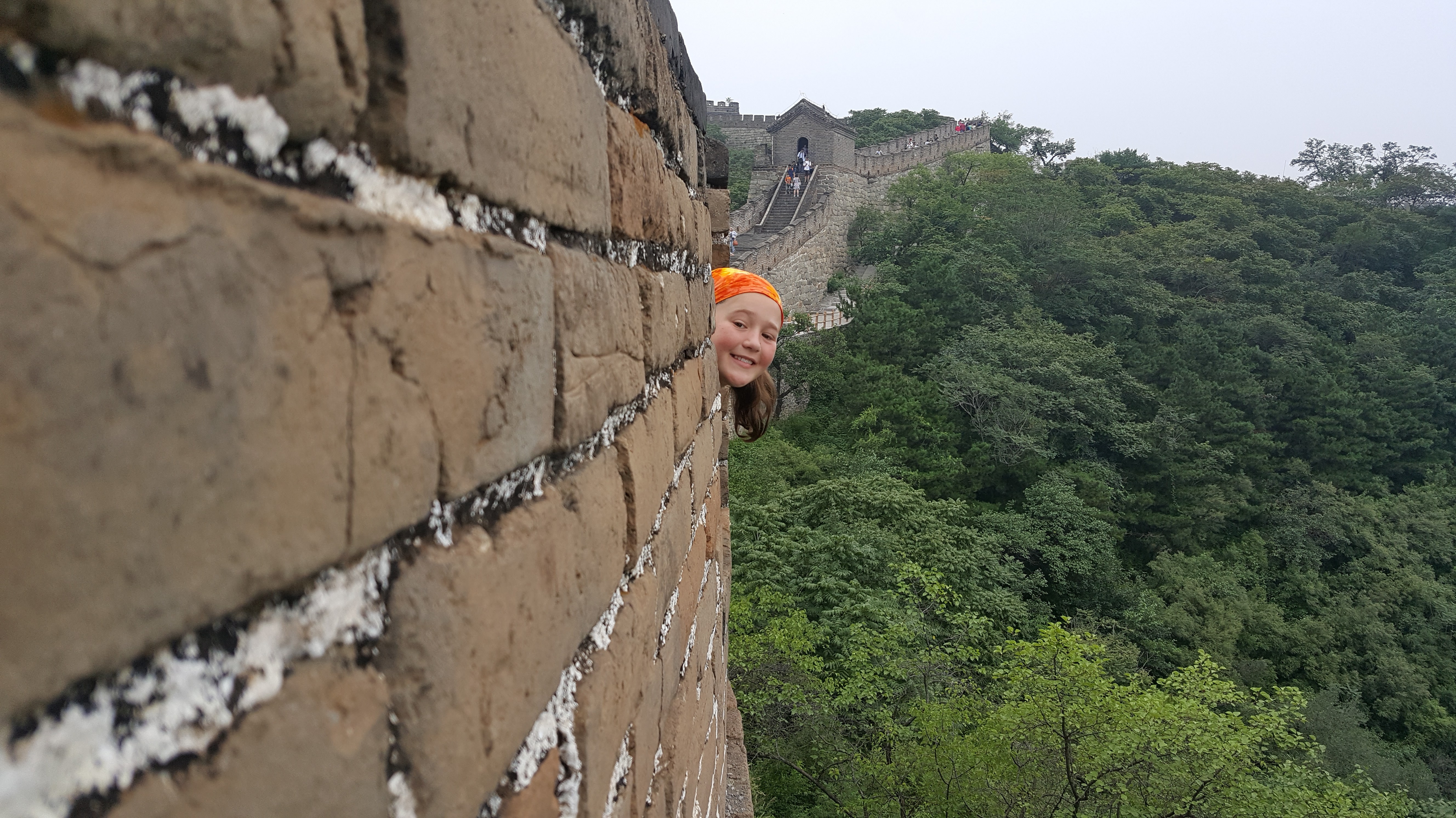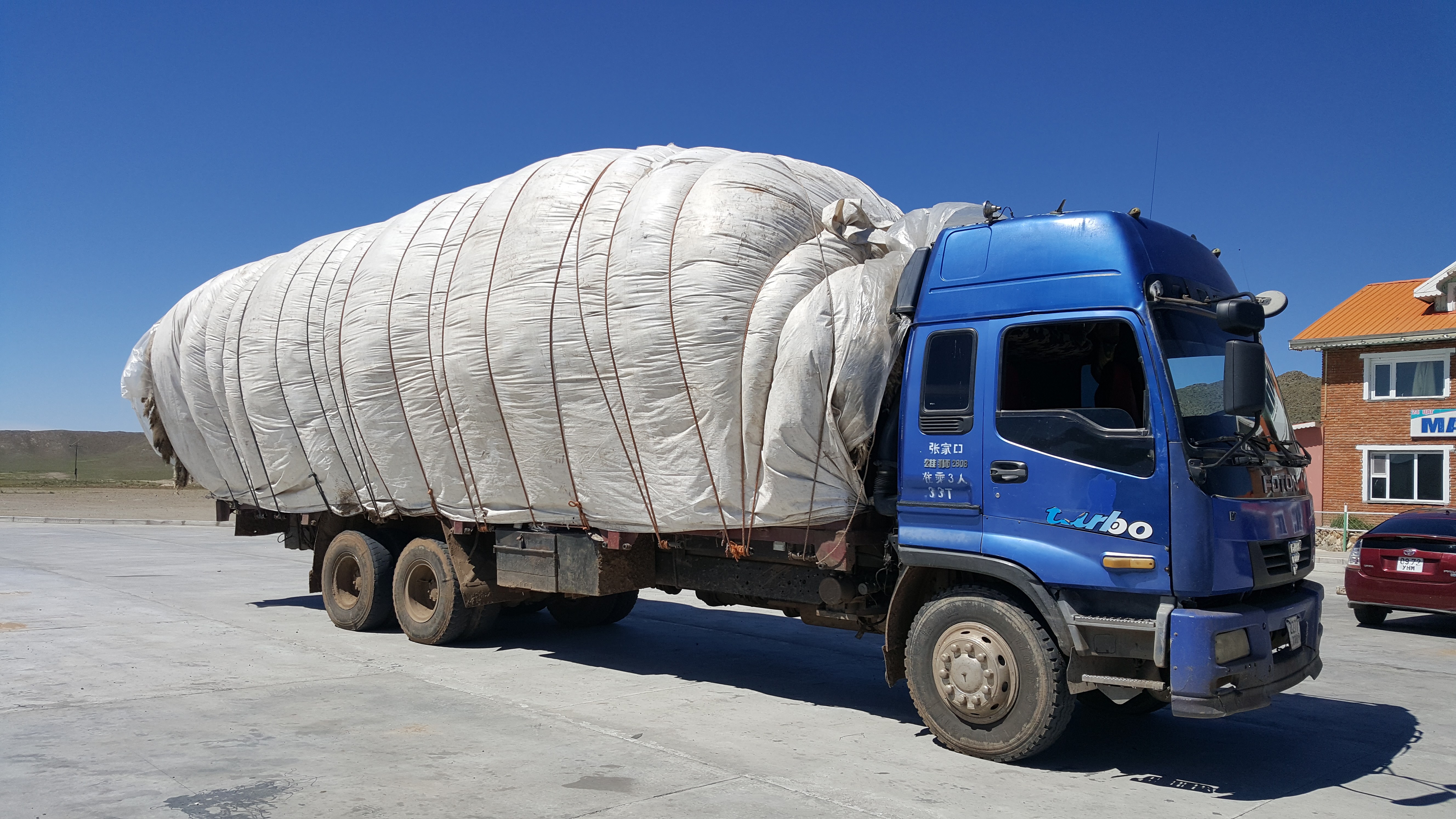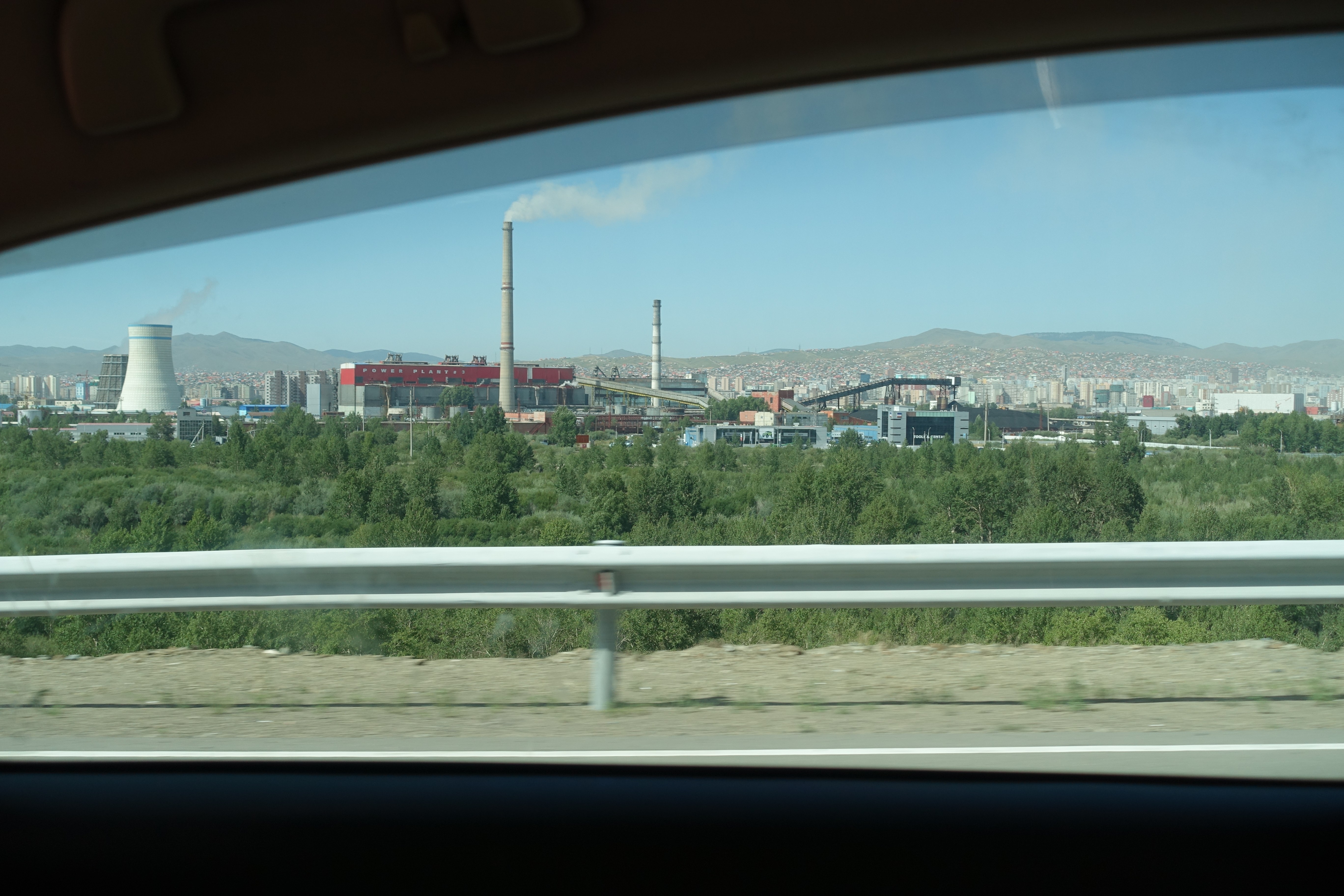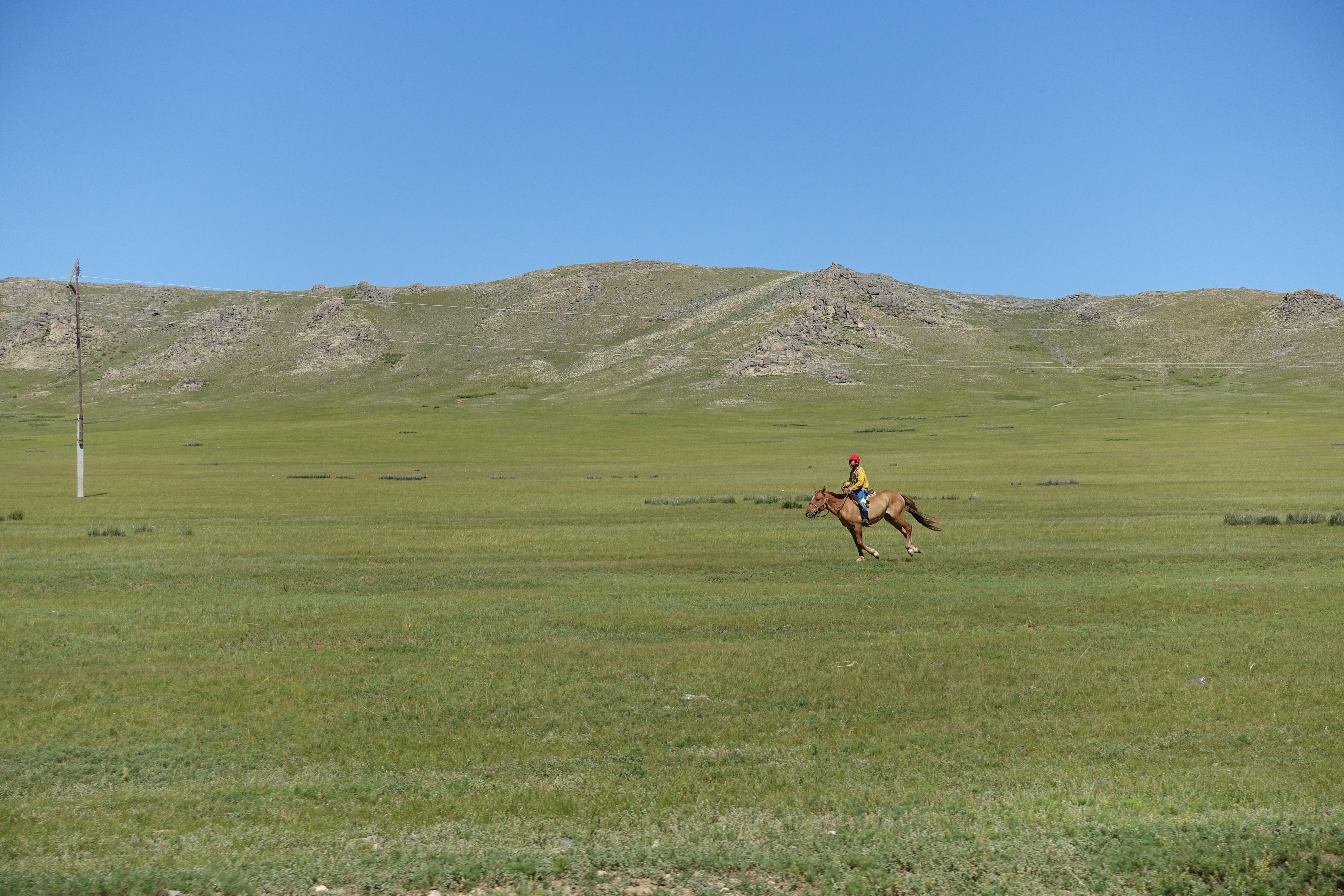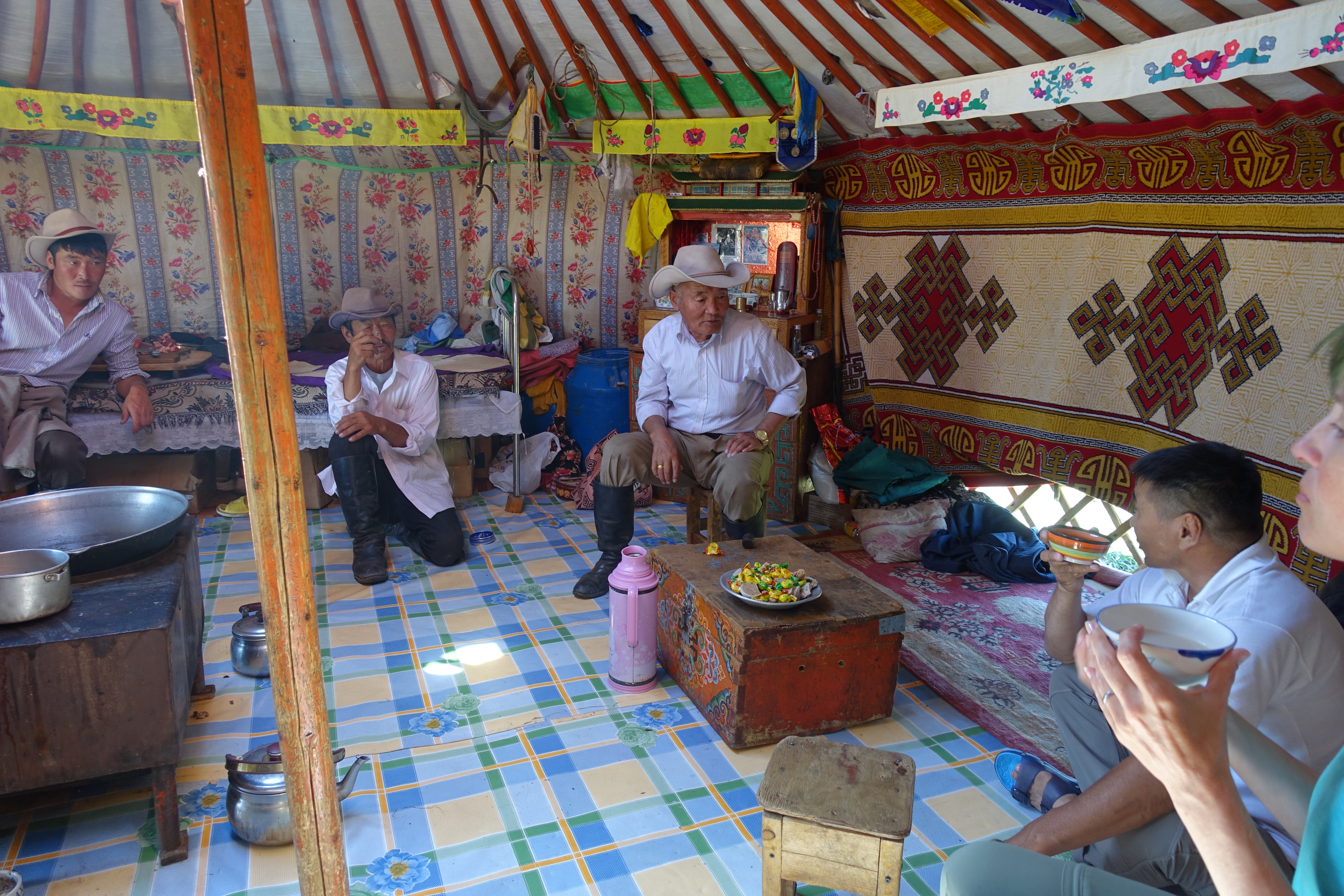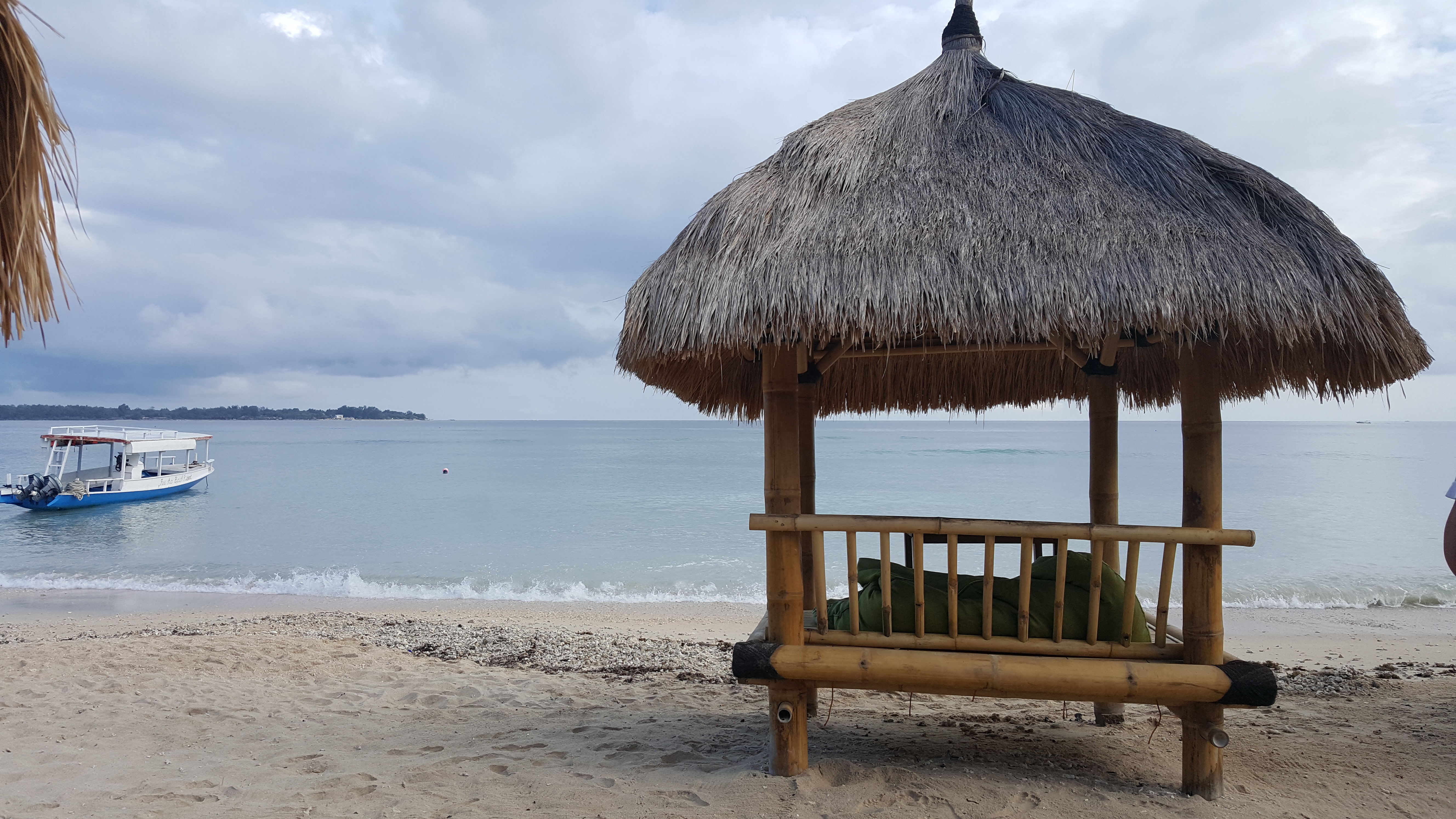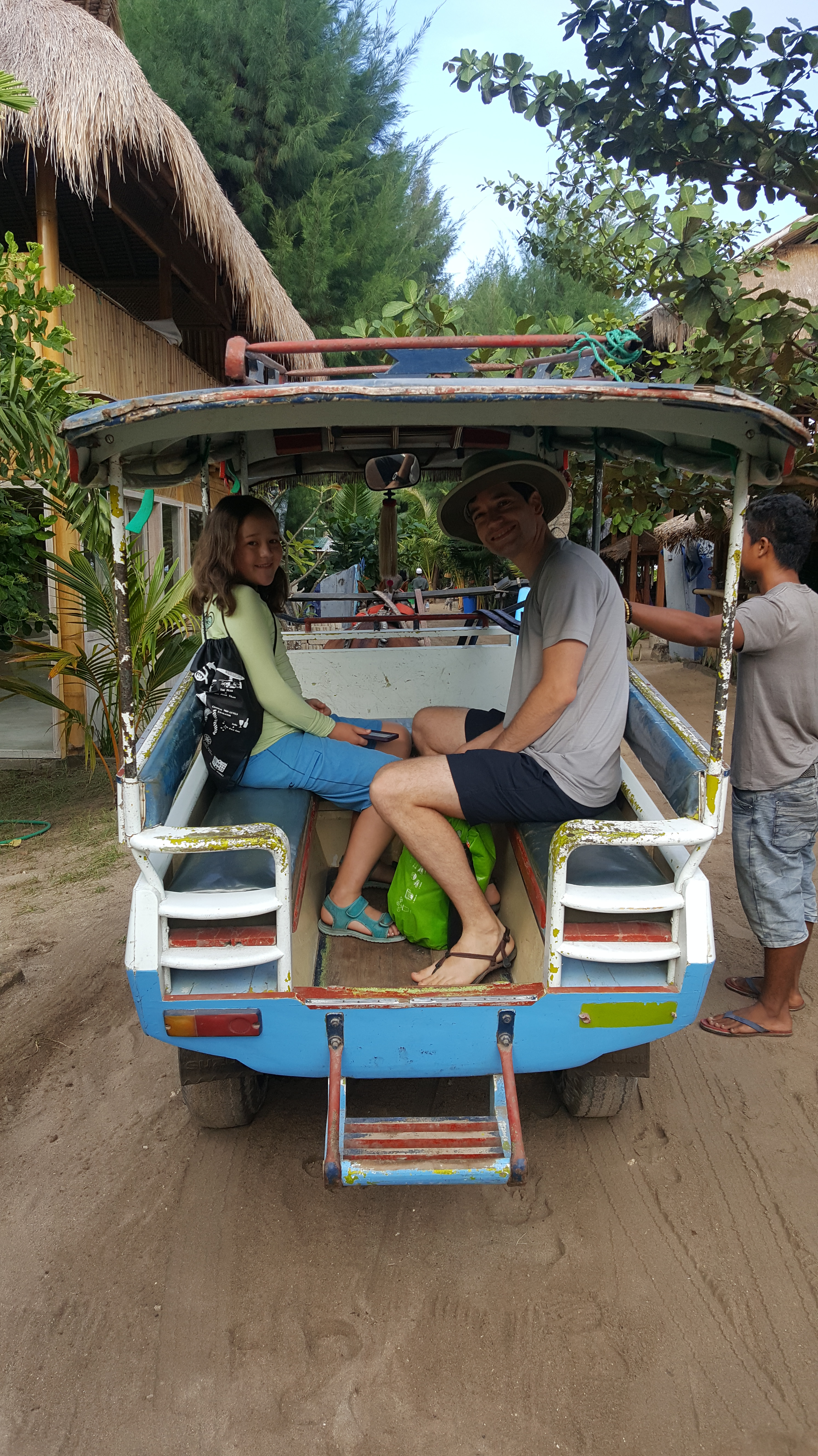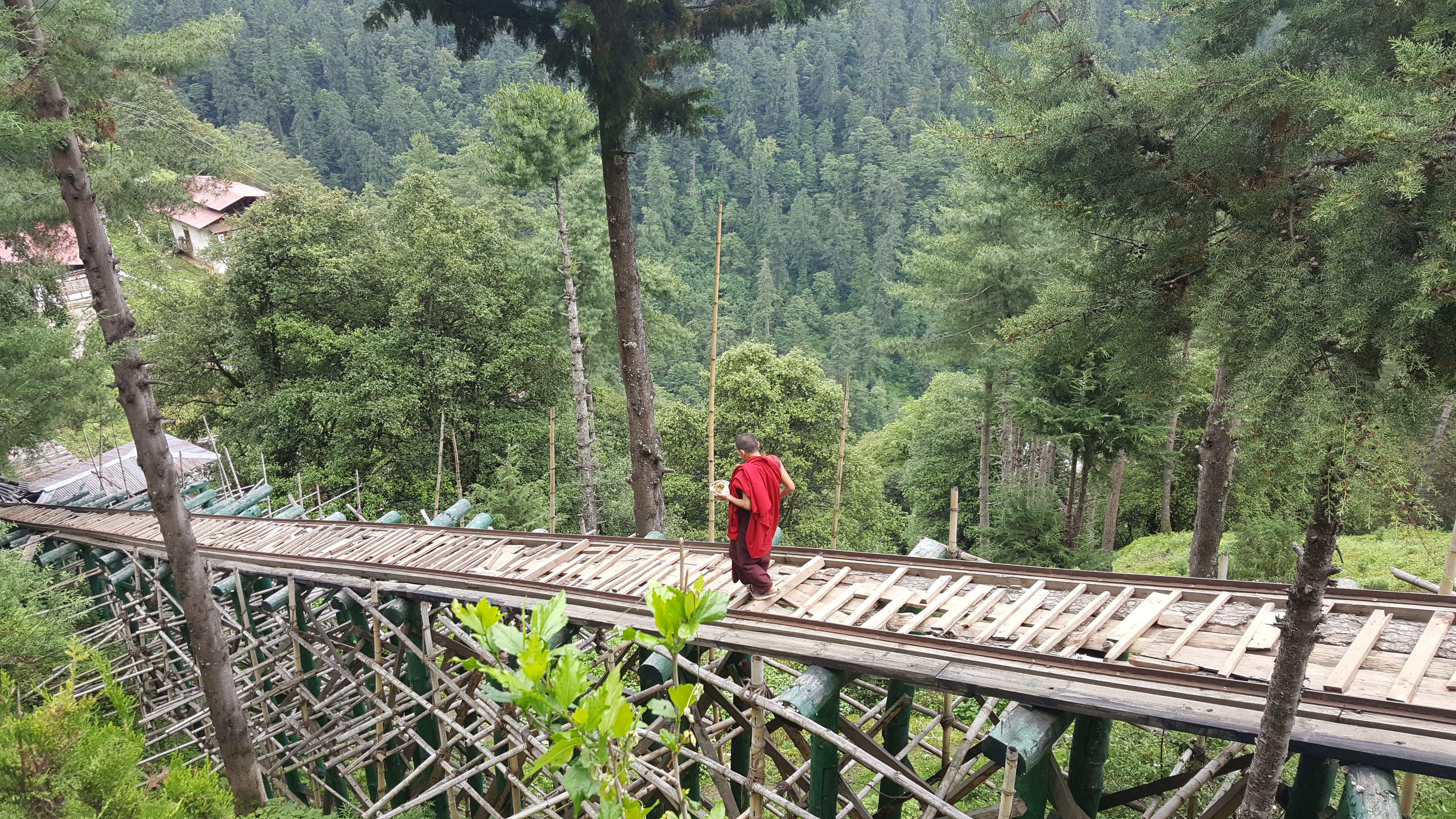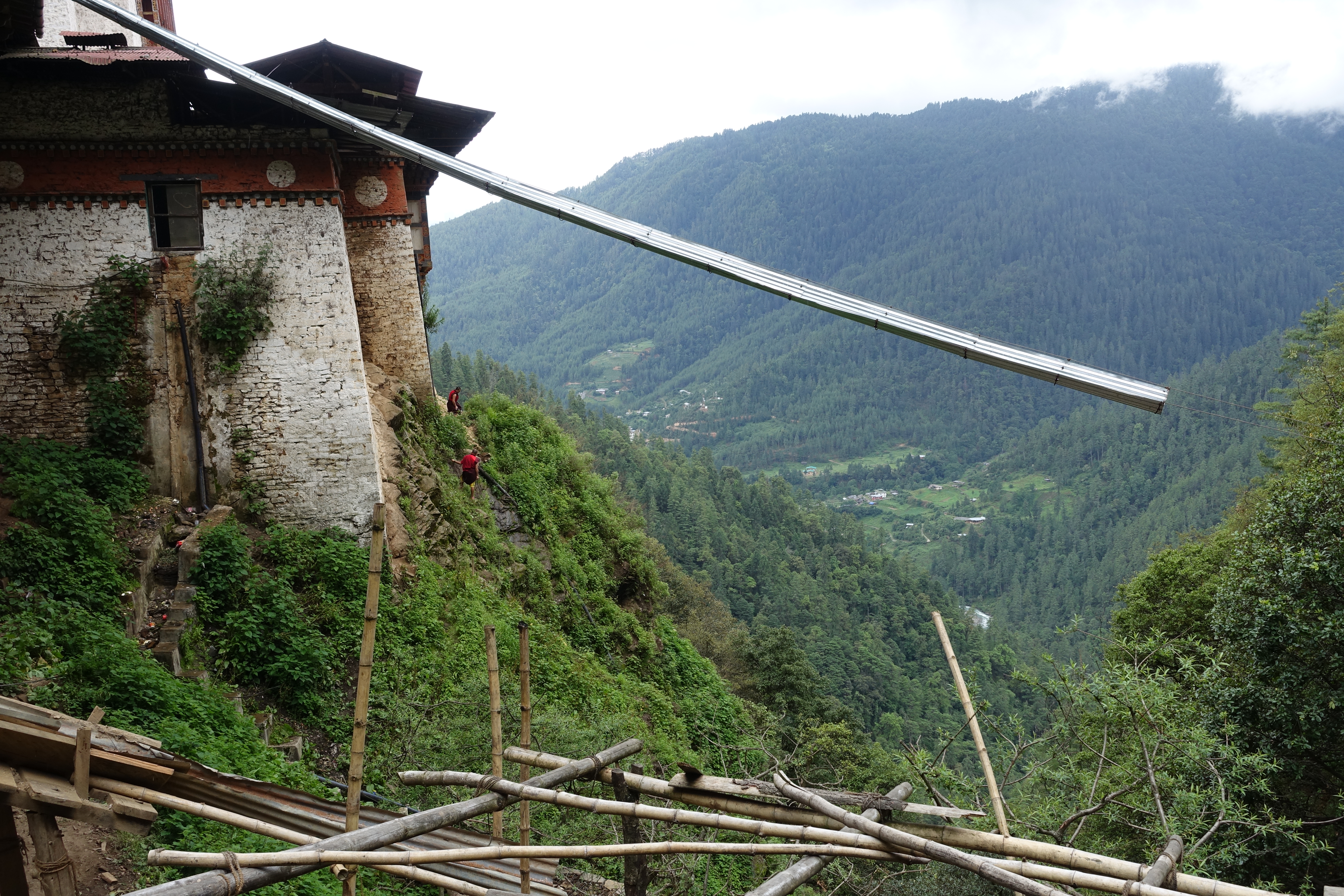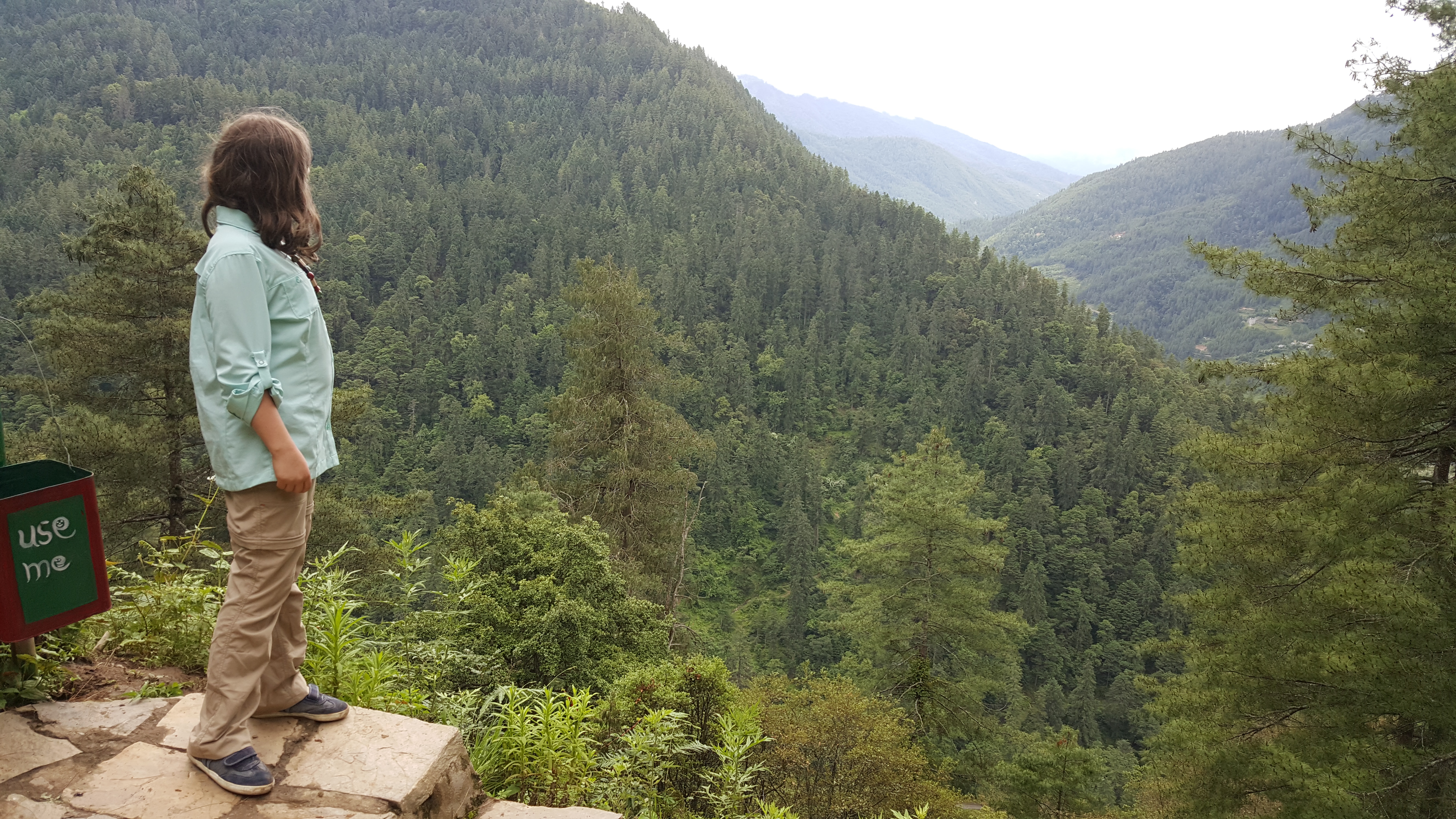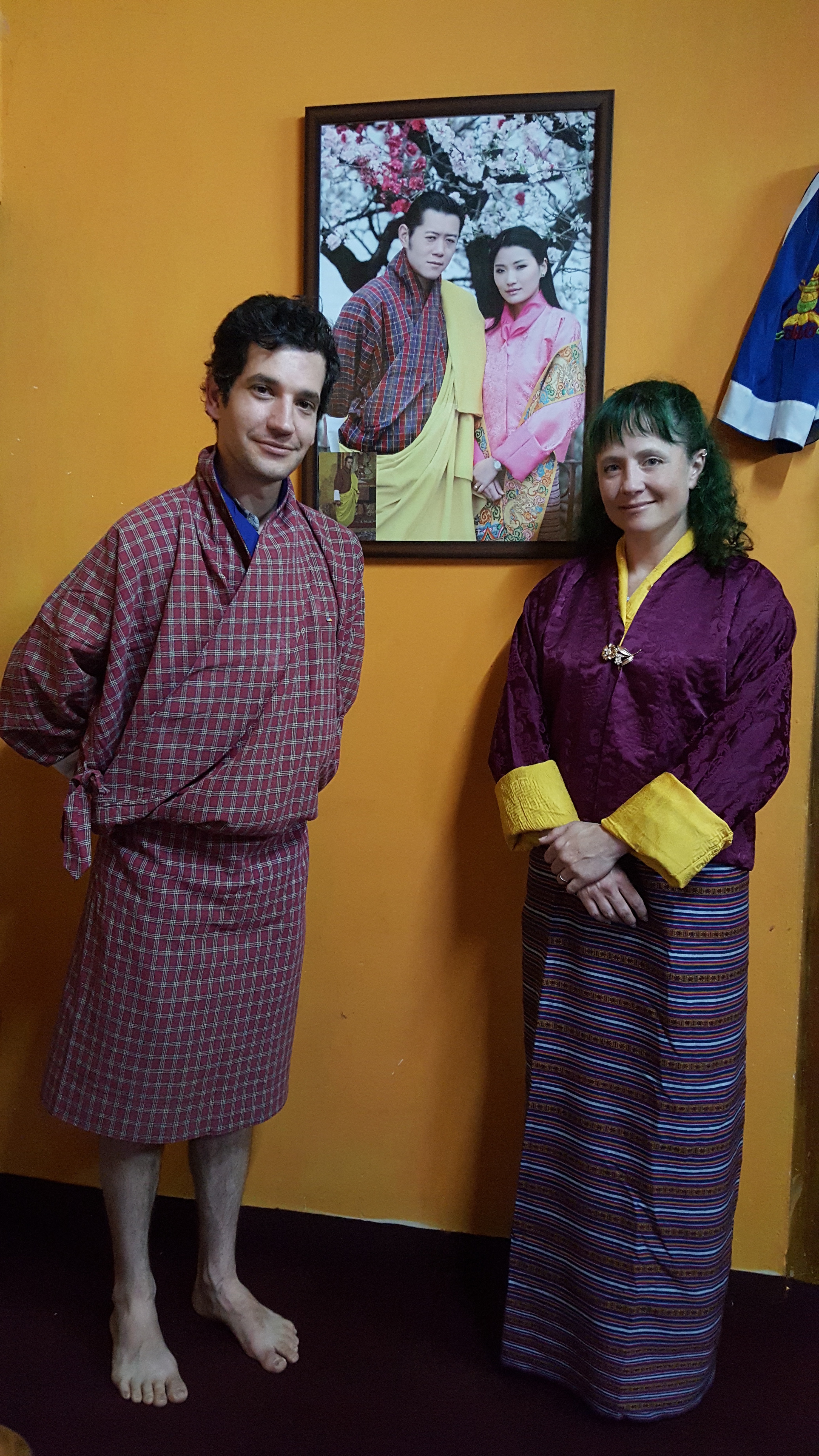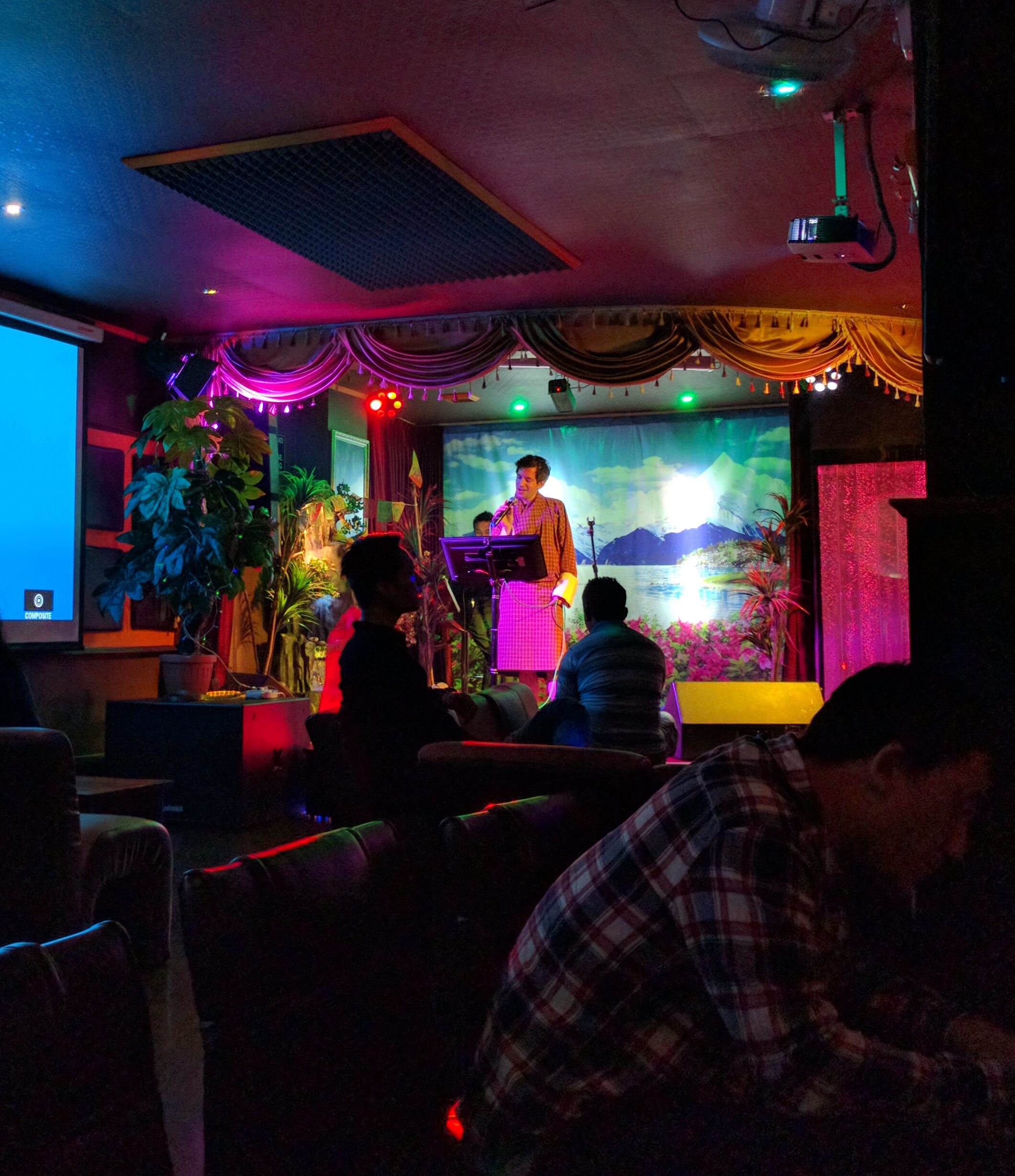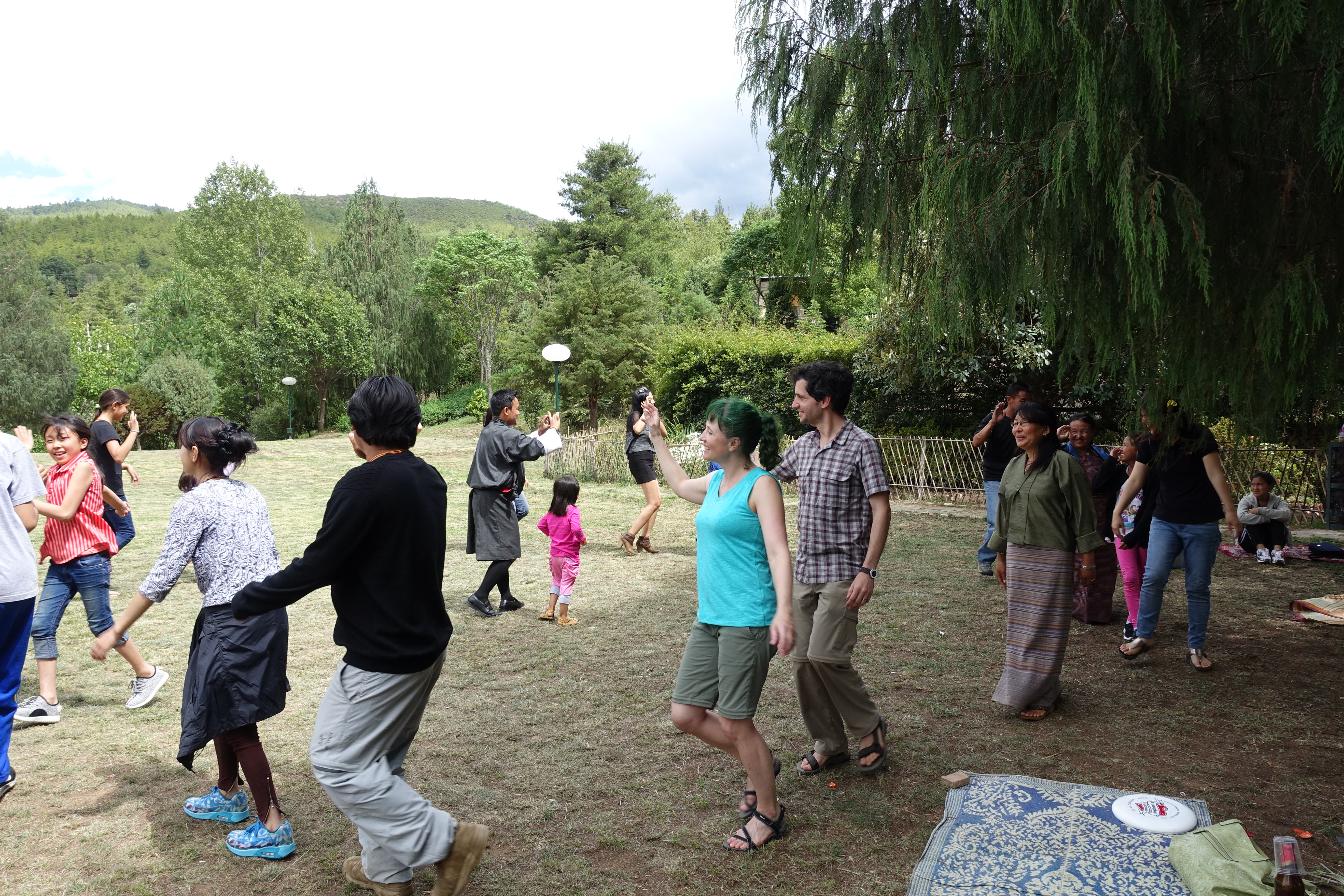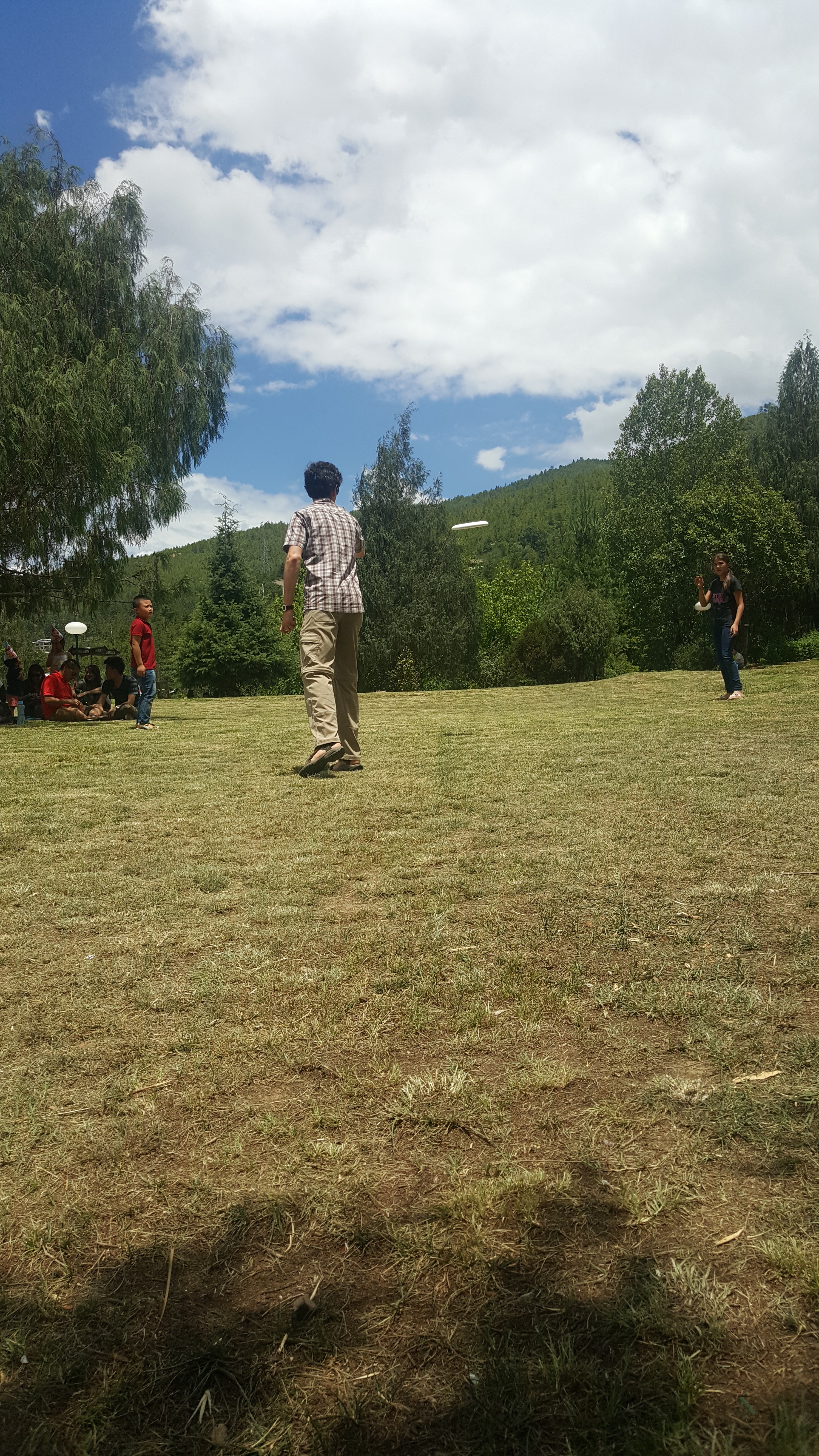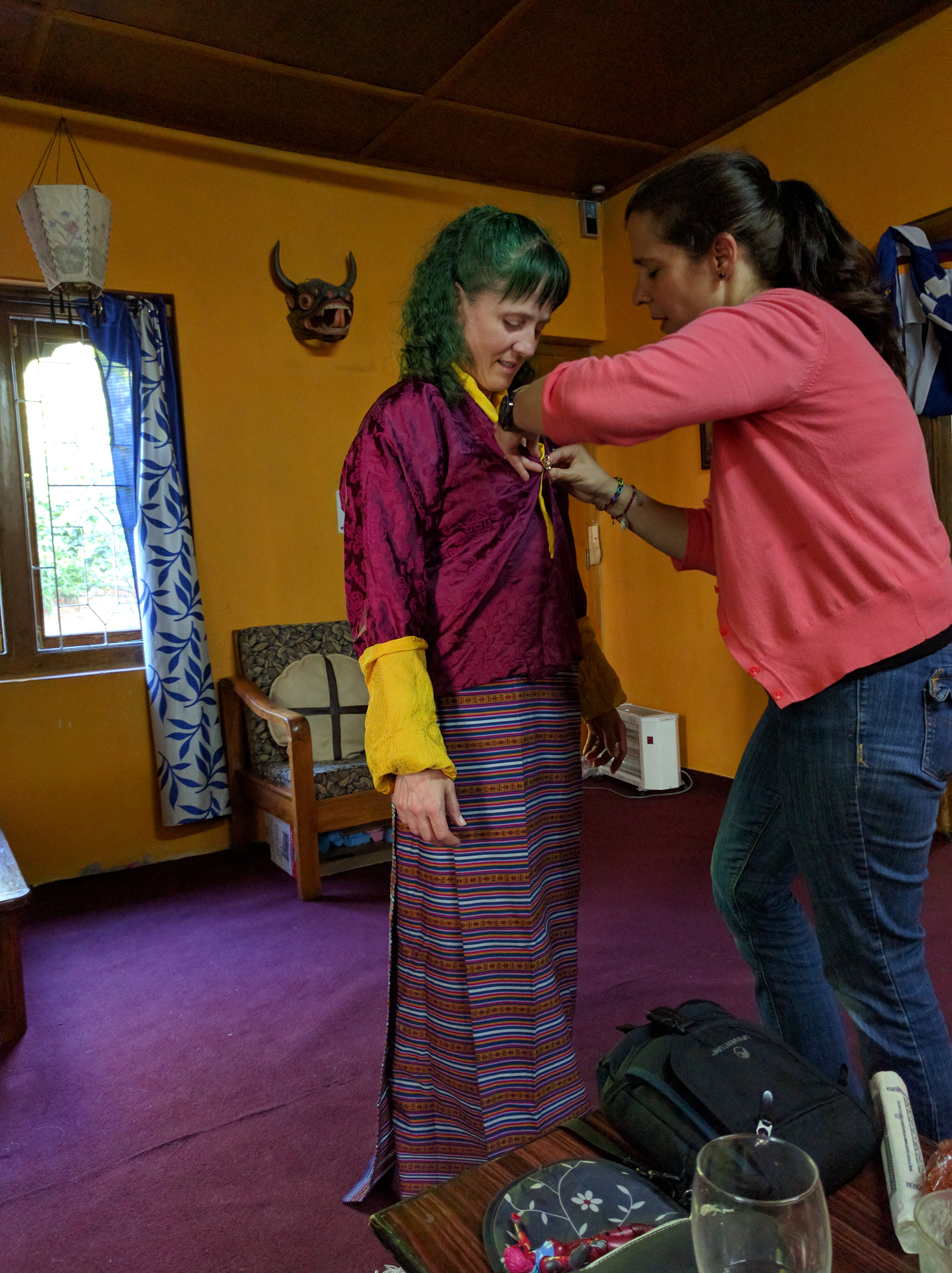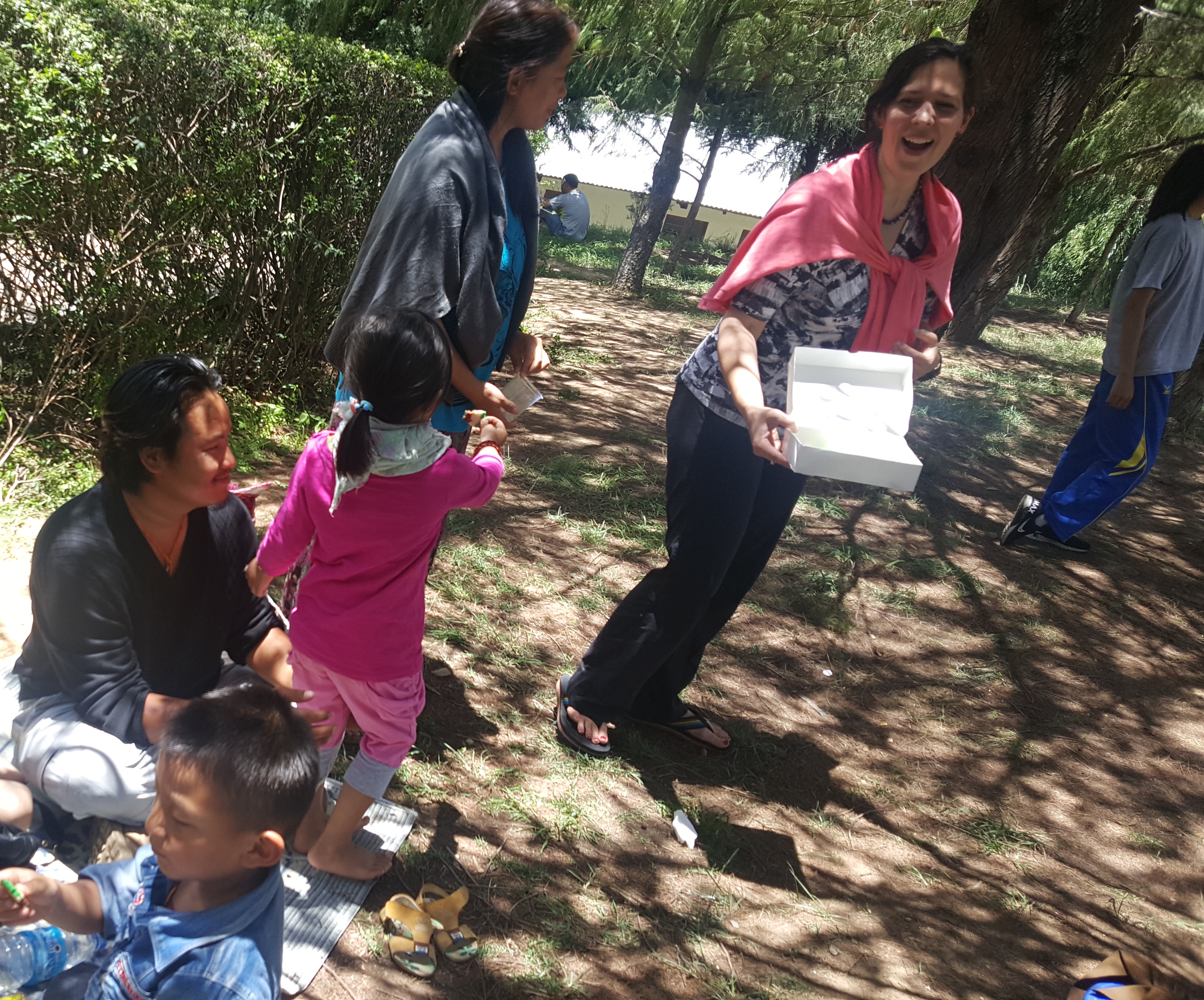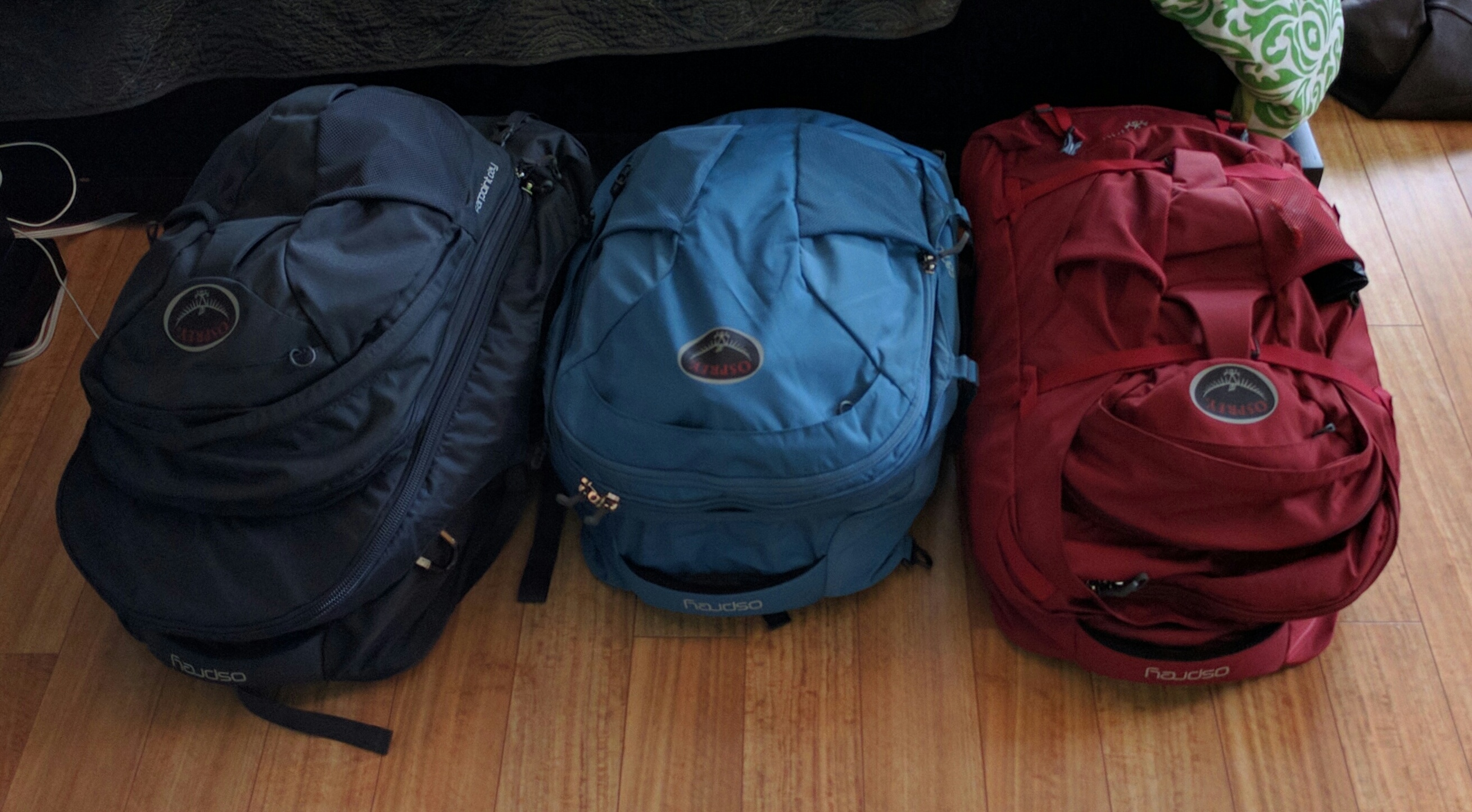After leaving Myanmar, our next destination was Paro, Bhutan. There are only a couple flights into Bhutan per day from select locations, so we had a pretty long journey to get there: we hopped from Lake Inle to Yangon, then onto Bangkok, staying there overnight (actually two nights because we missed one flight to Bhutan) before flying on to Paro International Airport the next morning with a stop in Guwahati along the way.
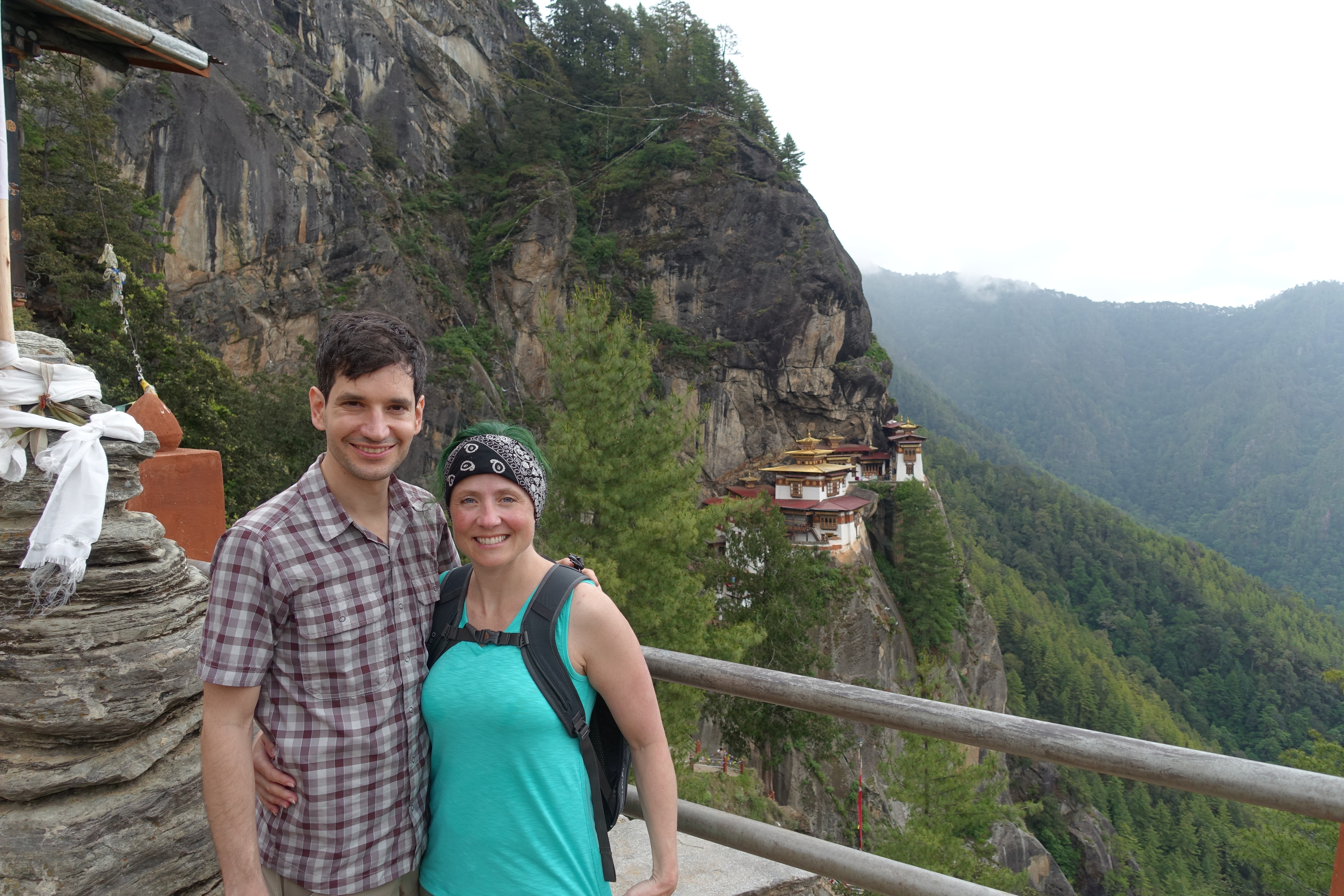
Hiking to Tiger’s Nest Monastery
Bhutan, unique among the countries we’re visiting, requires arrangements with a tour company before issuing a visa. The government sets a minimum price per day per person which pays for a guide and driver, 3-star accommodations, and all meals. Also included in the per-day price is a $65 tariff that supports the country’s free healthcare, free public schools, and road maintenance.

Pun-filled warning signs were omnipresent on the mountain roads
Due to this unusual setup, we felt very well taken care of, and also very busy. There’s a lot to take in, and the default was to show us as much as possible. After a few days we were feeling pretty exhausted and requested a more relaxed pace. Later our guide told us he felt guilty about dropping us off at the hotel so early (usually around 3pm) but we assured him it was exactly what we wanted.
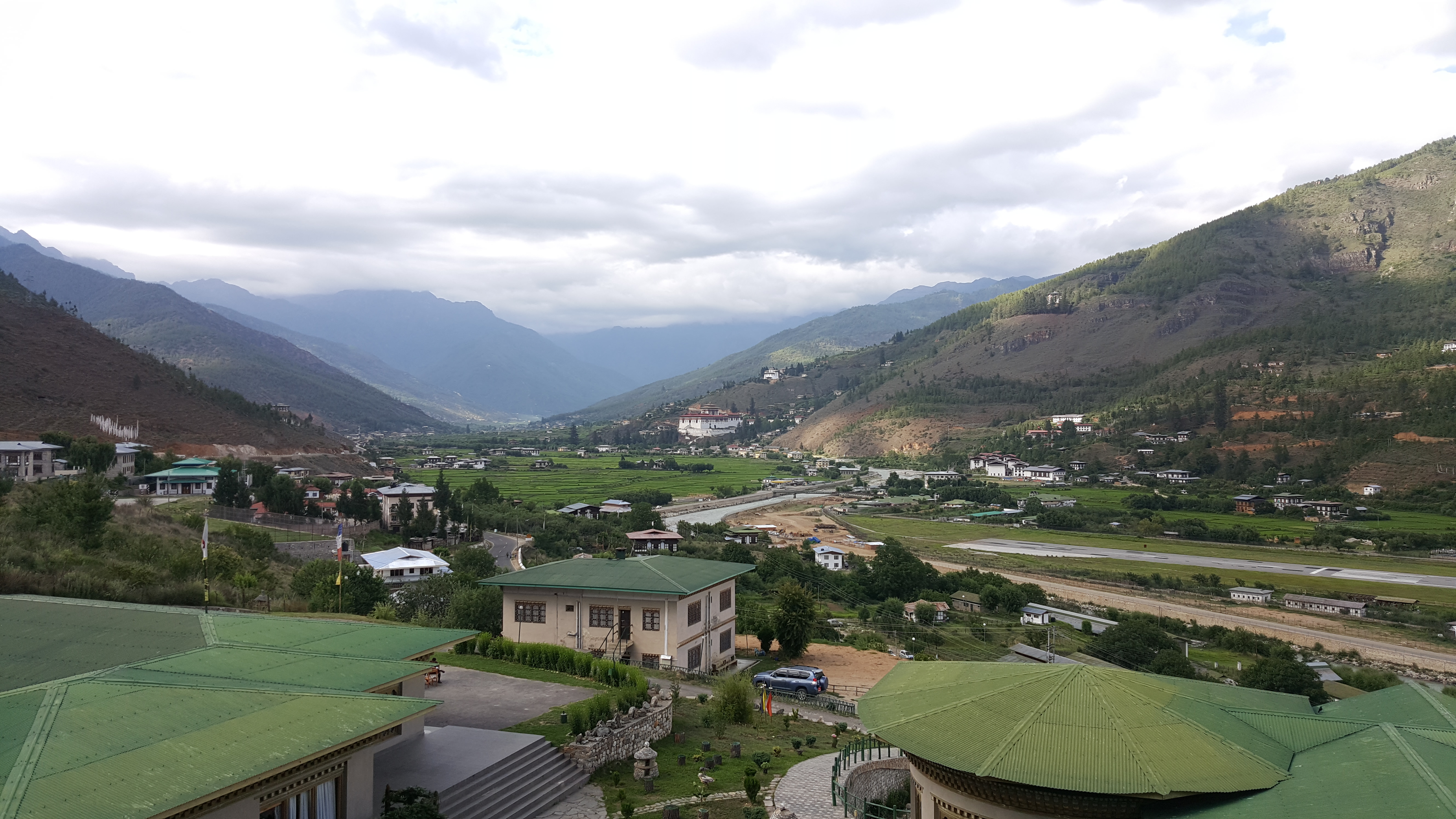
All our hotels had amazing views
Just about all the culture a tourist might encounter in Bhutan is related to Buddhism, the monarchs, or both. As explained to us, the country’s history essentially starts at the introduction of Buddhism to the area in the 7th century by Guru Rimpoche then jumps to The Great Unifier in the 17th. He subdued the tribal leaders of his time and is revered almost as much as Buddha himself. When he died, the tribal leaders took over again until the establishment of the current monarchy, the Wangchucks, in 1907. The currently living kings (referred to as K4 and K5) are also revered as demigods, especially K4, who abdicated in 2008 after transitioning the government to a representative democracy.
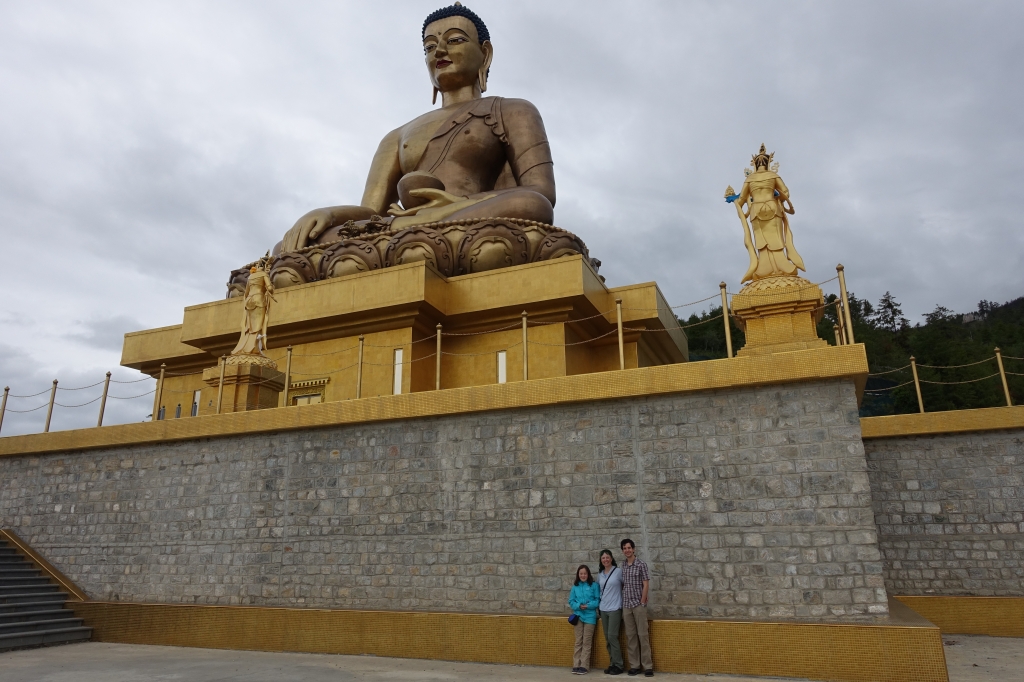
Largest seated Buddha in the world

Celestial beings on the second level for scale

(Second?) Buddha carved into a rock
But even more impressive than the rich culture is the scenery. Bhutan is all steep valleys with high-flying mountain passes between them. The roads are stunningly beautiful (and scary – we were fortunate to have a professionally trained driver). A monastery crowns every ridge and is usually reachable only on foot.

Chelela pass, the highest road in Bhutan at 13084 feet
Due to the tourism arrangement, it was slightly difficult to escape the tourist bubble. Fortunately our Seattle-resident travel agent Jill and her family were in Bhutan at the same time, and invited us to their house one evening. Ruby spent the night with her daughters and we borrowed a gho and kira (Bhutan’s mandated national dress) for a night on the town.
Later we attended a picnic with Jill and our guide Kinley’s families. Everyone was excited to teach us the local dances and we felt very welcomed. For our part, we got the Bhutanese playing Frisbee.
If you’re even a bit interested in traveling to Bhutan, I highly recommend contacting Jill at Cypress Himalaya Tours. When we missed our flight to Paro, she rebooked and rearranged everything in one day, which was a lifesaver for us.
Our guide Kinley was also excellent. We often had people from other groups drift over to soak up his boundless knowledge. His English was nearly flawless, and did you know he plays in a rock band?

Kinley hiking to Tiger’s Nest
Kinley and our driver Tshering were our constant companions for over 7 days. Sometimes the server-served relationship was a bit uncomfortable for me (“Can I grab my bags before Tshering does?”), and sometimes I could feel myself slipping into complacency (“No worries, they’ll take care of our bags and close the van door and check us in”). By the end I started to feel some relaxed friendship brewing between us, which was great but bittersweet because it was the end. It was tough to say goodbye, but hopefully we’ll see them again on our next visit to Bhutan.

Saying goodbye at the airport

Kate’s book recommendation: I like to read books set in the places I visit for additional context, history, and color. For Bhutan, I recommend Beyond the Sky and the Earth by Jamie Zeppa.
